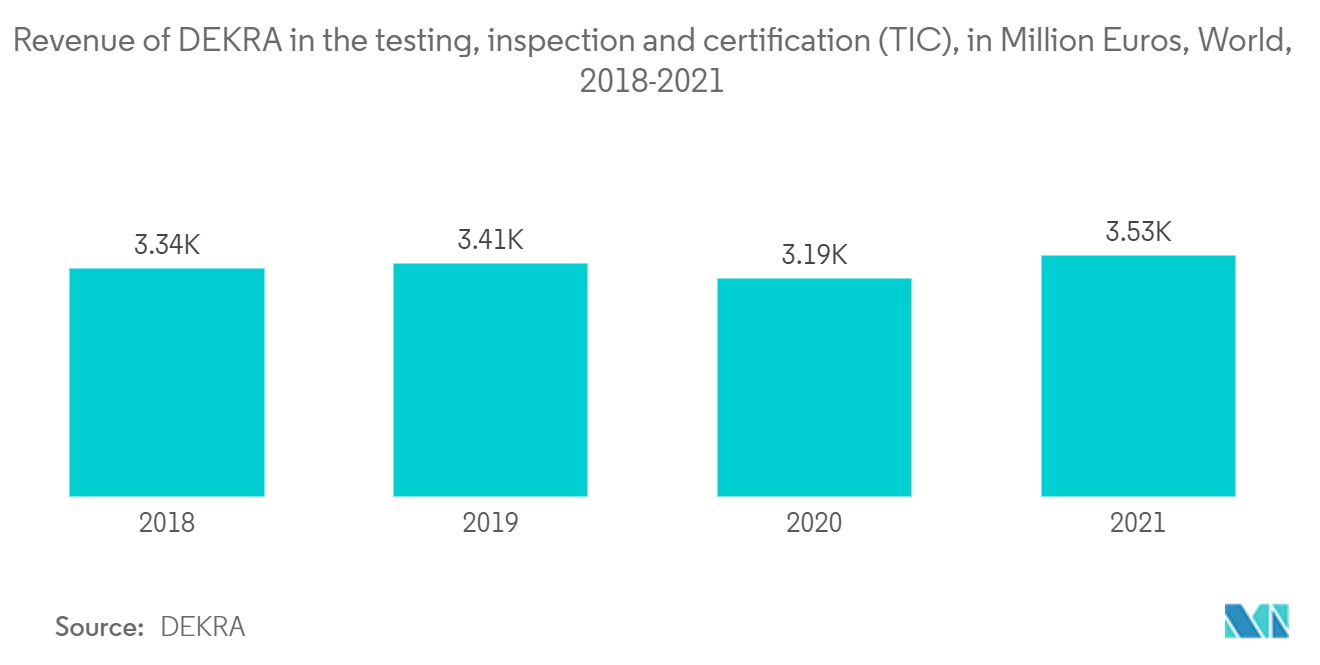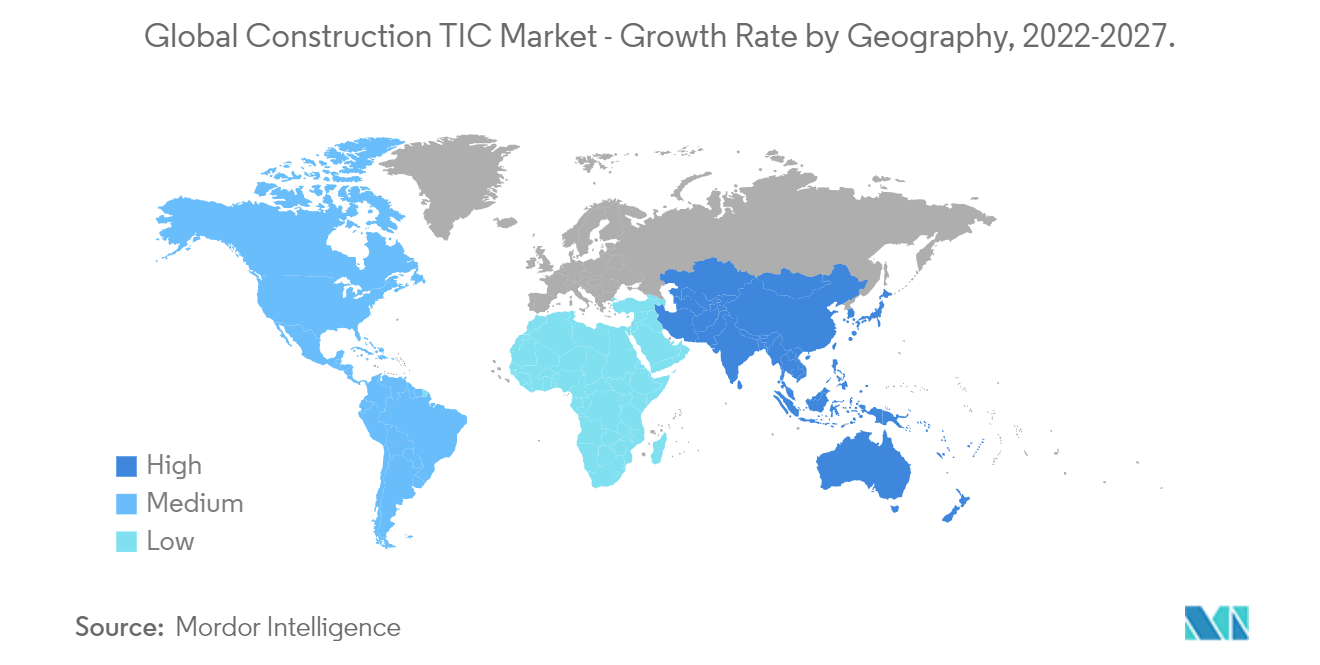Market Trends of Construction TIC Industry
This section covers the major market trends shaping the Construction TIC Market according to our research experts:
Testing and Inspection Segment to Hold a Significant Share
- Globalization has resulted in product standardization norms and penetration of developed technologies across various industries such as building and construction, among others, resulting in the growth of the TIC market during the forecast period.
- Furthermore, the growing middle-class population, rapid urbanization, networking, and communication technology advancement, and a preference to outsource testing, inspection, and certification services have fueled the growth of the TIC market in the building and construction industry.
- Various players in the market are also focusing on developing and launching new products and services to cater to the needs of a wide range of customers across industries. For instance, in February 2021, Dekra, one of the world's leading testing, inspection, and certification, expanded into non-destructive material testing (NDT) services for the energy industry and pipeline construction. These services help to improve work performance and worker efficiency.
- The demand for TIC for building and construction is increasing as the industry's structural safety needs grow. Many builders and contractors prefer TIC because it helps to ensure that construction projects are completed on time. Constant variation in the prices of testing methods can be a market restraint. The emergence of green and sustainable construction may present a market opportunity for TIC service providers. However, lacking testing facilities and skilled resources may pose a market challenge.
- Furthermore, the Central Government of India provided a 100% capital investment in December 2021 for the construction of a building, the establishment of utilities, and the test lane equipment for the test center. It will further drive the market growth over the forecast period.

Asia Pacific to Hold Significant Market Share
- Asia-Pacific is expected to have a high CAGR during the forecast period due to rising R&D investment, rapid urbanization and industrialization, massive manufacturing capabilities and exports, rising per capita income among the middle-class population, improved lifestyles, and increasing consumer awareness about the importance of quality certification, testing, and inspection. Furthermore, the developed countries have manufacturing units in the region, particularly in China and India.
- For instance, by March 2022, the Government of India intends to build 8,500 kilometers of roads and 11,000 kilometers of National Highway corridors in the country. The publisher anticipates that these construction activities will help the industry grow in 2022. The Indian government and the government of Dubai signed an agreement to construct industrial parks, IT towers, logistics centers, a medical college, multipurpose towers, and a specialized hospital in Jammu and Kashmir.
- The advancements in networking and communication technology, and the preference for outsourcing testing, inspection, and certification services have all contributed to the growth of the TIC market in the building and construction industry. Additionally, in November 2021, the Indian Administration approved the construction of 3.61 lakh homes under the Pradhan Mantri Awas Yojana (Urban). Moreover, supporting the new housing units takes the total number of sanctioned places under the scheme to 1.14 crore which has driven the market growth.
- During the last few years, countries worldwide have noticed significant urban population growth. Hence, the expectation for safe, sustainable buildings and a healthy urban environment is increasing. TIC services are helping players in the construction sector develop facilities and infrastructure that are high quality, profitable, and compliant with environmental and safety regulations. Furthermore, in August 2021, India announced its plans to raise INR 6 trillion through an asset-leasing program to free up government budget funds for infrastructure projects.


